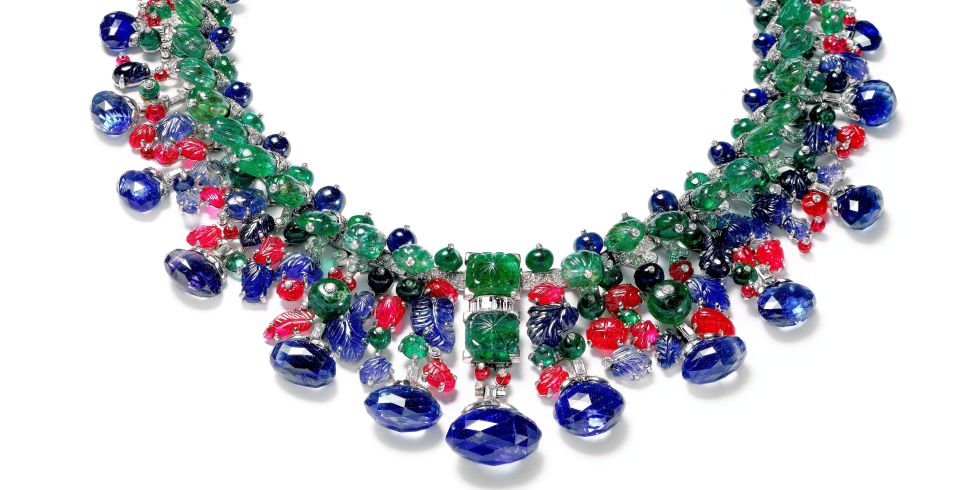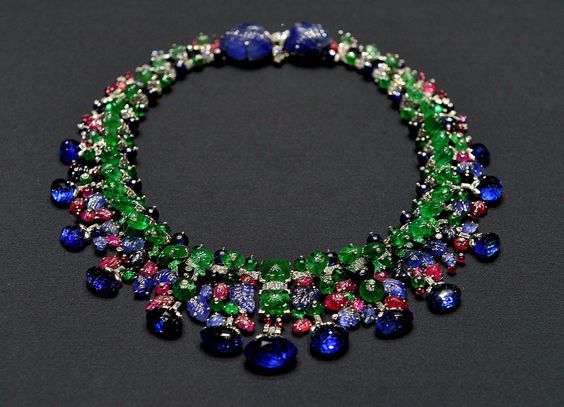 Tutti Frutti Necklace by Cartier
Tutti Frutti Necklace by Cartier
The Tutti Frutti Necklace by Cartier One of Cartier’s most famous pieces, the “Hindu necklace” was commissioned by Vogue-honored socialite and Singer sewing machine heiress Daisy Fellowes in 1936. It’s made of dozens of rubies, emeralds, and diamond beads set in platinum and thirteen sapphires. This was the necklace that helped kick off Cartier’s “Art Deco” craze. The first Tutti Frutti piece was designed in 1901 by Pierre Cartier. It was a necklace commissioned by Queen Alexandra to be worn with three Indian gowns she received as a gift. The designs are considered the perfect mix of East and West because they are made up of brightly colored gemstones (like sapphires, rubies and emeralds) carved using Indian techniques and set in French platinum and diamond mountings. The style became extremely popular during the 1920’s, but it wasn’t christened the ‘Tutti Frutti’ until 1970. In 1911, Pierre’s bother Jacques traveled to India and when he returned he refined the Tutti Frutti style by using the techniques he had learned there. Daisy Fellowes, the eternally stylish Singer sewing machine heiress, commissioned a Tutti Frutti necklace in 1936. Bracelets are the most well-known Tutti Frutti design, but the company also designed ear clips, necklaces brooches, barettes, powder cases, lapel pins and many other items in the style. In 2014, a shopper bought a tiny Tutti Frutti pin at a flea market in the UK for $60, and sold it at auction a few months later for $17,550. Countess Edwina Mountbatten owned a Tutti Frutti tiara, made by Cartier in England in 1928. When the piece was sold in 2004, The British government placed an export ban on it because the tiara is so significant in the history of British jewelry making. Queen Elizabeth owns a Tutti Frutti style brooch (but no one knows if it actually by Cartier, or an imitation of the style by another company). Evelyn Lauder’s Tutti Frutti bracelet was not the only one that has sold for over $2 million, in 2013 Christies sold one for $2,045,000, more than four times its estimate.

 The Tutti Frutti Necklace by Cartier
The Tutti Frutti Necklace by Cartier

